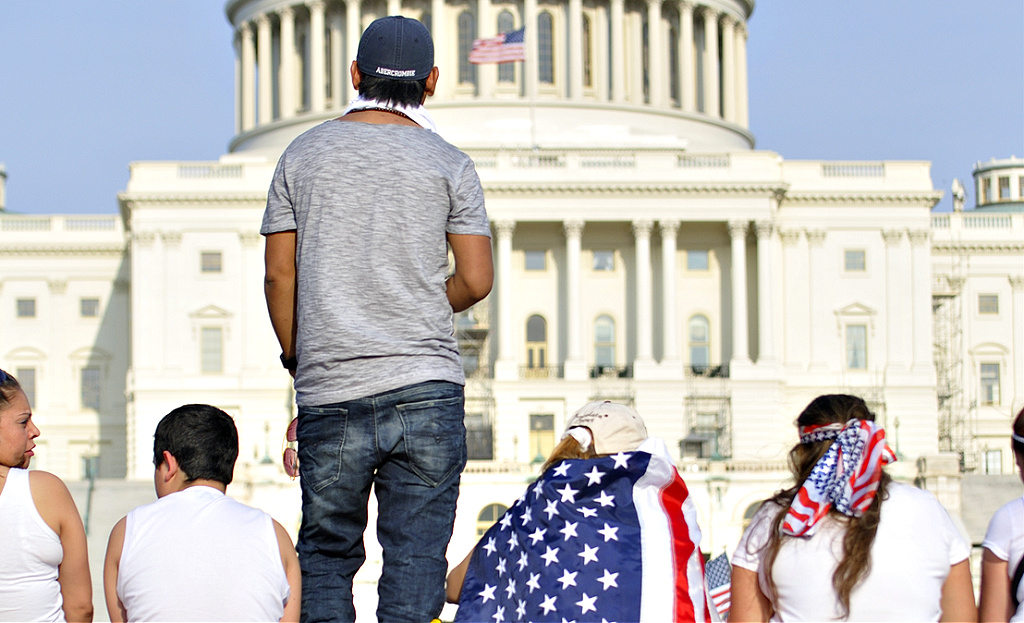Written by Jorge Loweree and Raul Pinto of the American Immigration Council
More than a decade after the U.S. Department of Homeland Security (DHS) first created the Deferred Action for Childhood Arrivals (DACA) program to shield certain undocumented youth from deportation, it remains the subject of ongoing litigation. This has limited its impact and created uncertainty for the nearly 600,000 people who benefit from its protections.
On October 5, the U.S. Court of Appeals for the Fifth Circuit affirmed a lower court decision finding that DACA is unlawful and was implemented contrary to federal law. While the program will continue for its current beneficiaries in the short term, many believe that the latest decision has set the stage for a full termination of the program by federal courts that have proven hostile to DACA for years.
Undocumented youth with DACA are experiencing a crisis that only Congress can fully address. The U.S. Senate has between now and the end of 2022 to finally get things right.
How Did We Get Here?
DACA was first created in 2012 through a DHS memorandum, which has been the subject of several legal challenges over the last 10 years. In 2018, Texas and seven other states sued to overturn the original program. The case was assigned to Judge Andrew S. Hanen of the Southern District of Texas—the same judge who previously struck down the attempted expansion of DACA and the implementation of a similar program known as the Deferred Action for Parents of Americans, or DAPA.
Judge Hanen struck down the DACA program on July 16 of last year, ordering U.S. Citizenship and Immigration Services to stop issuing any new benefits. Judge Hanen found DACA unlawful for two reasons. First, the Obama administration failed to follow the formal rule-making process by neglecting to publicly announce DACA and give the public an opportunity to comment. Second—and more important to the recent Fifth Circuit decision—Judge Hanen ruled that the DACA program itself surpassed the authority given by Congress to DHS in the immigration law.
But recognizing the impact of ending DACA for the more than 600,000 people in the program at the time, Judge Hanen paused the portion of the decision that would have required the agency to terminate any existing protections or stop renewals while his decision went through the appeals process. This allowed current DACA recipients to keep their benefits but did not allow anyone new to apply even if they were otherwise eligible.
Shortly after the decision in the Texas litigation, the three sets of defendants—the federal government, a group of individual DACA recipients, and the state of New Jersey—appealed the decision to the Fifth Circuit. In the meantime, the Biden administration finalized and published a new regulation intended to shield DACA from litigation challenges. That rule is set to go into effect at the end of October.
What the Fifth Circuit Ruling Means:
The Fifth Circuit agreed with Judge Hanen’s decision, but also sent the case back to his district court for further consideration of the new rule published by the Biden administration. In doing so, the Fifth Circuit further cemented Texas’ argument that the state’s injury, or basis for standing to file the lawsuit, is based on its discriminatory objection to the presence of noncitizens in the state.
As to the legality of the DACA program itself, the Court held that the 2012 DHS memo did not follow the correct notice and comment procedures, which violates the law. And the Fifth Circuit agreed with Judge Hanen that DHS does not have the power to put in place a program such as DACA.
This second reason could become the death knell for the DACA program as it currently exists. If the Fifth Circuit thinks the DACA program surpasses the authority Congress granted to DHS, it will likely not matter in the eyes of the court whether the program was born out of a memo or a formal regulation.
What Comes Next:
While the limited version of DACA will remain in place for the moment, the litigation challenging the program’s legality will continue. Now, the new rule’s survival—and the future of hundreds of thousands of DACA recipients—is in the hands of Judge Hanen, the same judge that previously struck down DAPA, the DACA expansion, and DACA itself. While his decision could be appealed all the way to the U.S. Supreme Court, the direction of the litigation seems clear given the makeup of the Fifth Circuit and the Supreme Court.
With limited options for executive action, and the potential shift in the composition and control of Congress on the horizon, the only viable way to protect undocumented youth is through legislative action between now and the end of 2022.
The Biden administration and Senate leaders must come together to use every tool at their disposal to finally craft a permanent solution to protect undocumented youth across the United States. The time for negotiations is now as the ability of hundreds of thousands to legally remain in the country hangs in the balance.
FILED UNDER: Biden Administration, Senate, Texas


